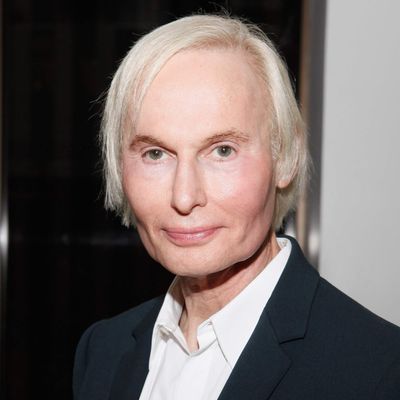
One of the first — and strangest — details to emerge after Dr. Fredric Brandt, the celebrity dermatologist and Botox pioneer, was found dead at his home in Miami was that a fictional character may have played a role in the tragedy. The death was quickly ruled a suicide by police, and Brandt’s publicist told the New York Post that Brandt had been hurt by a thinly veiled caricature of him played by Martin Short on Unbreakable Kimmy Schmidt, leading to speculation that the send-up had pushed him over the edge.
This is a common trajectory in stories about suicide: After someone kills him or herself, those who are left behind tend to focus on the precipitating event, when there appears to be one — a job loss, for example, or an incident of cyberbullying. It’s a dramatic way of looking at tragedies that supplies a simple explanation for them.
But several suicide experts told Science of Us that suicide is hardly ever the result of a single cause, whether in Brandt’s case or others. “The risk of looking just at the precipitating event is that it does not help us to understand what leads people to take their lives,” said said Dr. Jill Harkavy-Friedman, vice-president of research at the American Foundation for Suicide Prevention. “If we just focus on the trigger, then we don’t think we can do anything to save lives, and we don’t learn about getting mental-health treatment.”
Every case is different, but researchers have some idea of what the biggest risk factors for suicide are: mental-health issues such as depression, substance abuse, and family history, among others. Suicides that don’t involve any of these factors are few and far between.
“I’d say clinical depression is probably present in about 70, 75 percent of those who commit suicide,” said Dr. Michael Peck, a clinical and forensic psychologist based in Los Angeles. “Substance abuse overlaps with that, so you have all these factors coming together.” To focus on a precipitating event is to ignore the fact that “there are so many other factors such as [a lack of] coping skills and self-esteem that add to it, that make suicide more likely.”
Dr. Carl Tishler, a psychologist on the American Board of Professional Psychology and adjunct associate professor at Ohio State University, cited suicide attempts that occur as a result of tax issues as a grim example. “Yes, people have dug their hole prior to the IRS coming after them and probably have some difficulty in the past prior to that,” he said, “but the IRS might be the thing that pushed someone over the hill.”
But precipitating events are the easiest stories for outsiders — including journalists — to understand, and they’re also more interesting (especially, perhaps, when they involve popular TV shows), so they get “blown up,” continued Peck. “I remember all the media stories over the years — [someone] ‘killed themselves because of financial setbacks,’ that kind of thing,” he said. But it’s much more likely that such a suicide is the culmination of years of struggle caused by a variety of factors. “Your distressor is the thing that we see, but it doesn’t mean it’s the cause,” said Harkavy-Friedman.
There is an undeniable randomness to suicide: There are people who would have killed themselves had they not found the right treatment at the right time; and there are victims, perhaps including Brandt, who might have been able to hold on longer if they had found treatment, or more effective treatment. The best anyone can do, faced with a phenomenon this complex, is try to understand the patterns that do exist within it. “I wish this were more like physics,where we had a formula and could plug everything in,” said Tishler. “But unfortunately we do not.”




